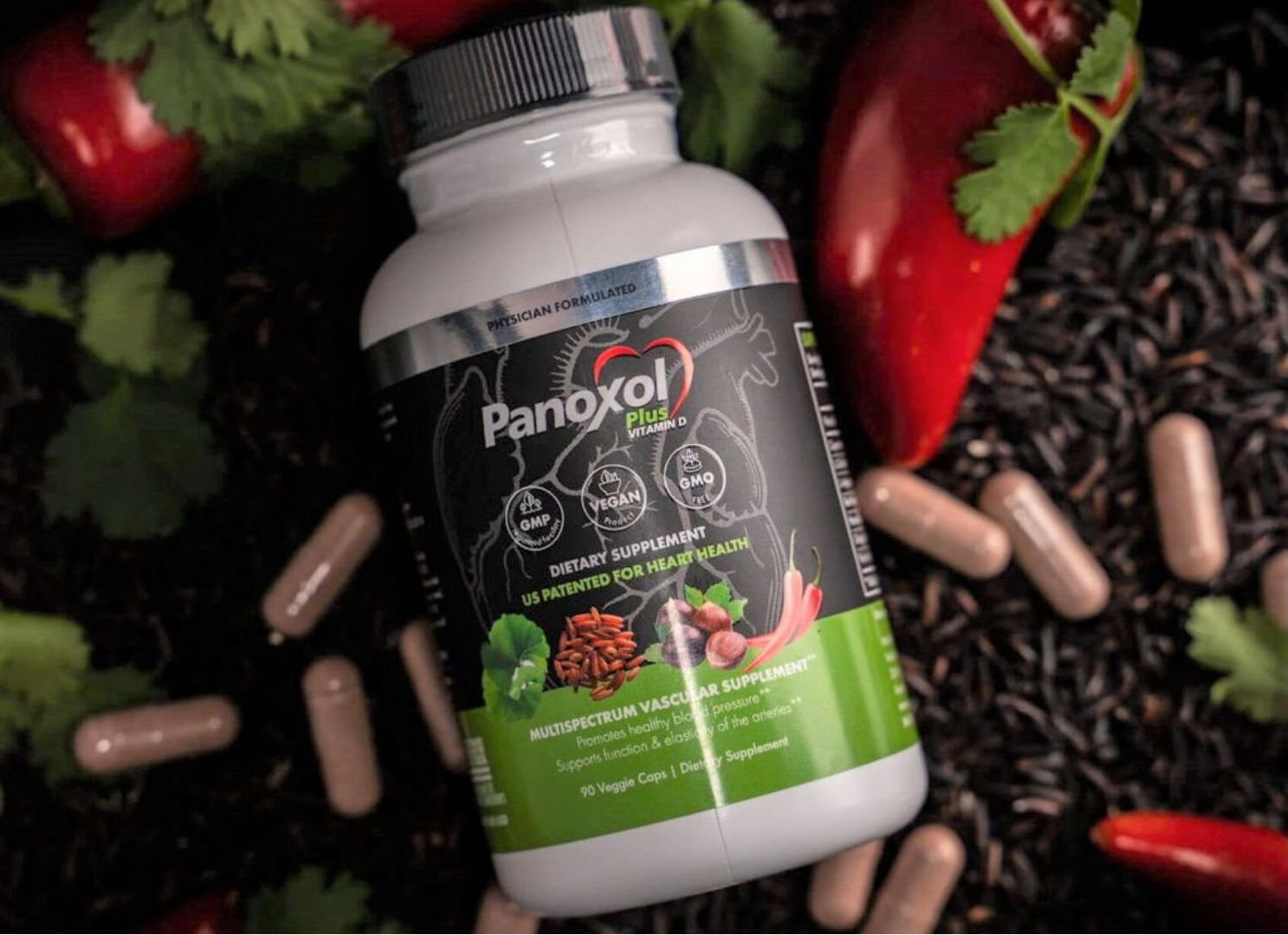A stroke occurs when blood flow is cut off to neural tissue. It is most commonly assumed to occur in the brain, but can also occur in the spinal cord as a “spinal stroke”. Approximately 80% of cerebral strokes are ischemic (blood flow is blocked off), and about 20% are hemorrhagic (a blood vessel bursts causing localized pressure injury). The cellular cause of death is lack of oxygen and glucose: the brain requires glucose but does not store glucose and cannot make glucose, so the obstruction of blood flow in an ischemic stroke, or inability to overcome the pressure gradient in a hemorrhagic stroke results in the same lack of oxygen and glucose causing rapid injury or death of neural tissue.
The treatable risk factors that Panoxol can help
Treatable risk factors include hypertension, smoking, heart disease (including arrhythmias or abnormal heart rhythms), diabetes, cholesterol imbalance, and physical inactivity. Hypertension is an abnormal elevation of blood pressure due to a myriad of factors, but generally associated with endothelial dysfunction. Endothelial dysfunction may be a precursor of hypertension; or, subsequent to its development, endothelial dysfunction may occur in accelerated form.
The endothelium is the name of the lining of blood vessels, and it is arguably the largest organ in the body, lining 100,000 miles of blood vessels and covering roughly a soccer field in surface area. This lining is responsible for producing nitric oxide, which then relaxes the blood vessel, allowing more blood to flow through it. When the endothelium is dysfunctional, it does not recognize or cannot respond to the need for blood flow, and the vessel remains in a constricted state.
Additionally, this dysfunctional endothelium is more susceptible to cholesterol plaquing, and these plaques are more likely to rupture, triggering a local clot, or even allowing this clot to travel to another area of the body. This is how an “ulcerated” plaque in a vessel of the neck can cause a stroke in the brain.
Prevention is better than cure
Endothelial dysfunction is worsened by diabetes, kidney failure, elevated LDL cholesterol, elevated homocysteine levels, smoking, lack of antioxidant consumption, and high salt diet. It is endothelial dysfunction which signals the initiation and progression of atherosclerosis, contributing to worsening high blood pressure, heart attack, stroke, peripheral vascular disease, and erectile dysfunction. Furthermore, endothelial dysfunction underlies microvascular (microscopic blood vessels) disease such as multi-infarct dementia and microvascular angina. These vessels are too small to be aided by procedures such as stents, endarterectomy, or bypass operations. It is this microvascular endothelial dysfunction which is believed to underlie a condition known as “leukoaraiosis”, a finding on brain MRI’s associated with cognitive dysfunction, which is not explained by ischemia of larger vessels supplying the brain.
Panoxol®, a patented combination of L-arginine, L-citrulline, horse chestnut seed extract, Ginkgo biloba, cayenne pepper, and red yeast rice, provides a novel non-prescription supplement to support the body’s natural repair mechanisms. Combined with appropriate blood pressure control, diet, and exercise, this product can be expected to assist in the prevention as well as recovery from stroke. Each ingredient works at multiple points in the progression of endothelial dysfunction and atherosclerotic disease, and the combination is synergistic in effect.
Six all-natural ingredients that promote overall cardiovascular health
L-arginine is an amino acid, which means it is found in protein, in dilute form. It is the precursor to nitric oxide and the only substrate needed to synthesize nitric oxide. Supplementing the diet with purified L-arginine helps increase nitric oxide levels, thus ameliorating endothelial dysfunction.
L-Citrulline has been shown to both inhibit arginase (which would turn arginine into uric acid instead of nitric oxide) and to improve arginine stores better than arginine itself.
The combination of citrulline and arginine have been shown to reverse endothelial dysfunction. In addition, it has been shown that the combination of citrulline and arginine enhances nitric oxide bioavailability.
Horse chestnut is best known for improving ankle swelling and shrinking swollen leg veins. It has been shown to protect the endothelium, and also has an important role in stroke prevention and recovery. Aescin, the active ingredient, has been shown to prevent damaging inflammation and actually downregulates inflammatory genes and upregulates healing genes in a mouse model of stroke.
Cayenne, a potent antioxidant, has been shown to improve not only stroke risk, but several contributory risk factors, such as hypertension, atherosclerosis, diabetes, and obesity.
Red yeast rice improves cholesterol profile, as well as diminishing oxidation and limiting the expression of cell adhesion molecules, effectively making the endothelium less ‘sticky’ and therefore less likely to form cholesterol plaque.
Ginkgo biloba is widely recognized as a neuroprotective supplement, protecting the brain from injury in cases of absent or diminished blood flow. It improves blood flow to the brain in patients who have experienced a hemorrhagic stroke, and has been extensively studied and found helpful in both ischemic and hemorrhagic strokes.
In a recent randomized, double blind, placebo-controlled study of ischemic stroke, Ginkgo biloba administration tripled the likelihood of 4 month improvement to half the original NIHSS score.


